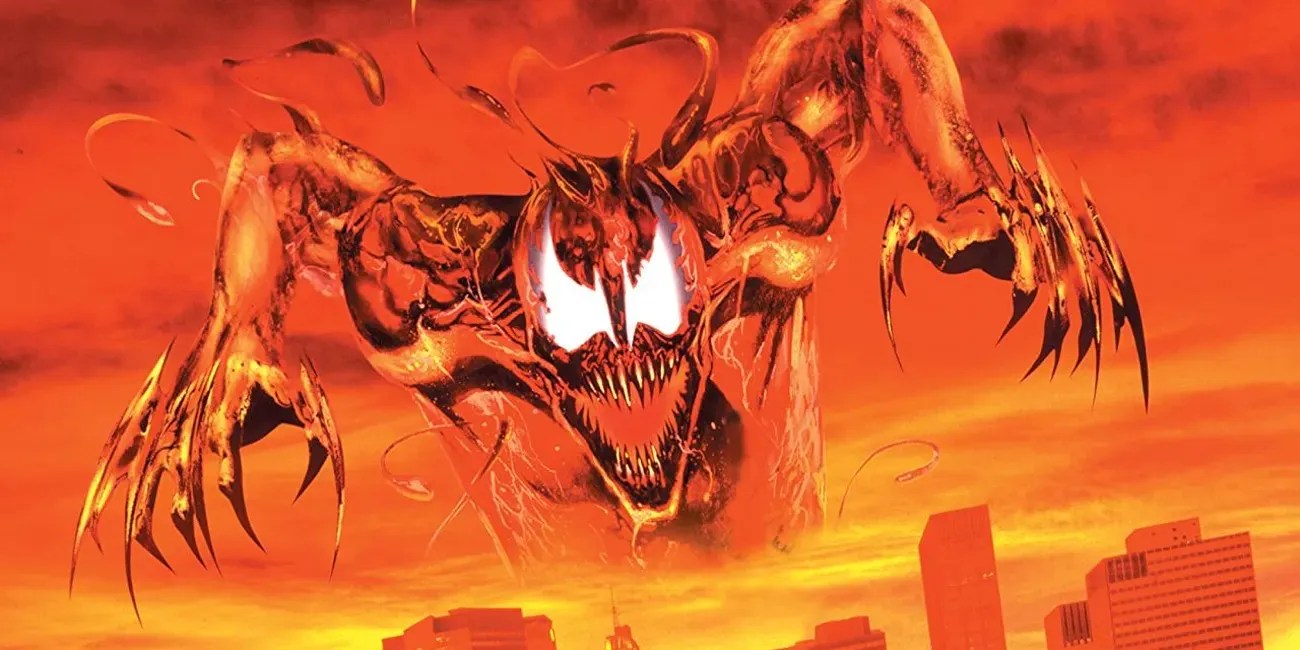Long-awaited sequelVenom: Let There Be Carnageis set to release to theaters in September, but the film’s MPAA rating has yet to be revealed. The reveal trailer, as well as the title and previous film’s after-credits scene,showed off fan-favorite villain Carnage, who is among the most violent characters in Marvel Comics canon.
The first film, 2018sVenom, was controversial for a number of reasons, one of which was the accusations of heavy editing to force the rating to a PG-13. Fans argued that Venom, a character who is routinely a villain and who is almost always extremely violent, should be given a suitably gory solo movie, and the addition of Carnage has brought new fire to that argument.

RELATED:Venom: Let There Be Carnage – 10 Things You Didn’t Know About Cletus Kasady
R-rated superhero movies are starting to have a resurgence, but they are still a rarity in blockbuster film. Studios have a number of reasons for reticence towards R-rated films in any genre, but superhero films are especially difficult to pass. Accepting an R-rating means reducing a film’s potential audience by age restricting entry, and it means giving up the ever-profitable child demographic.Many horror films find themselves hacked upin the edit to fit into a PG-13 rating to ensure high school students and below can buy tickets. Superhero movies have the added problem that parents routinely bring kids to films likeDeadpooland register complaints when the nature of the film becomes apparent.

Despite all of that, fans routinely rejoice at the prospect of an R-rated film about their favorite comic book characters. FromBladein 1998 to theDeadpoolfranchise, superhero films that set themselves apart are often rewarded. Each Marvel and DC cinematic universe film has been rated PG-13, leaving the door open for competition to aim towards an older demographic when it suits the source material.
The upcomingVenomsequel has based much of its marketing around its central villain, Carnage. In the comics, Carnage is a symbiotic alien, the first ofmany offspring of Venom. Much in the way the Venom symbiote bonded with Eddie Brock, Carnage is one with Cletus Kasady, a sadistic serial killer who perfectly matches the alien in bloodlust and intent. Together, the two share a bond even tighter than Venom’s and subsequently wield greater power. Carnage has beena Spider-Man villainon numerous occasions, but he is Venom’s direct nemesis. His powers are comparable to Venom’s, with the added ability to wield the gooey matter of his body as deadly blades, spikes, and bludgeons.

Carnage is an extremely straightforward character, a serial killer bonded to a murderous alien who wholly agree on their only goal, to cause violence. The most well-known Carnage comics storyline isMaximum Carnage, which based on the trailer, the film seems to be taking some inspiration from. The story starts at Ravenloft, an institute for mentally ill superhumans, where Cletus Kasady reconnects with the Carnage symbiote andforges a band of villainsto take over New York City.
From his personality to his power set, it seems impossible to create a version of Carnage which is accurate to the source material without allowing the creators to run wild with violence.Fans decried the firstVenomfilmfor its censorship and heavy editing, as its early trailers sold it as an R-rated action thriller. When asked about his favorite scene in the first film, Tom Hardy famously referenced the great deal of footage left on the cutting room floor. The upcoming sequel could break with convention and give the beloved characters the freedom the fans clamber for.
Perhaps the best example of how this can work is theDeadpoolfilms. Ryan Reynolds who produced and starred in both films has repeatedly argued forthe importance of both films' R-ratings, to stay true to the character and make the movies that the creators wanted to make. The MPAA is the organization that determines film ratings in the United States, and it is notoriously inscrutable and difficult. 2006’sThis Film Is Not Yet Ratedchronicles the bizarre standards with which the mysterious members of the MPAA rate cinema. The standards vary from one film to the next, as it is nearly entirely opinion-based. An R-rating can be seen as a weight around a film’s neck in some cases, but some films wear it as a badge of honor.
Venom was conceived as a villain, Carnage as a villain so dark he forced other villains into the hero role, a story aboutthose characters requires a certain tone. The argument can be made that creators have managed to make villains frightening, imposing and disgusting within the bounds of a PG-13 rating. The hospital scene in Sam Raimi’sSpider-Man 2springs to mind, a brilliantly conducted nightmare without a single drop of blood spilled. For all that scene’s screaming intensity, the atmosphere is clinical, the colors all greys and whites. It fits perfectly into the story of a scientist mad with power as his creation runs wild. But that isn’t the story of Carnage.
Carnage was created in the early 1990s, inspired by the wild popularity of Venom and the unwillingness to reassign the symbiote to another host, writer David Michelinie and artist Mark Bagley devised an even darker version. In the aesthetic of the character, the designers' intent is clear: they wanted a villain to fit the sensibilities of the ’90s. Carnage looks right at home alongside characters likeSpawn, whose first issue debutedthe same year. If the creators intend to bring fans a version of Carnage without the gore and terror that is his default state, why even bother dredging up the character?
Venom: Let There Be Carnagestill has several months of buildup before its slated release date this fall, during which fans will eventually learn the rating.Cletus Kasady will finally reach the big screen, but it remains to be seen just how faithful of an adaptation it will be.
MORE:5 Things Only Die-Hard Marvel Fans Noticed In Venom 2’s Trailer